Whisky defined
Whisky defined: “Whisky – (or Whiskey) is the name of a broad category of alcoholic beverages that are distilled from natural cereal grains and are subsequently aged in oak casks. The grains used to make various types of whisky, include barley, malted barley, rye, malted rye, wheat, and maize/corn. They are made throughout the world with the most popular styles coming from Scotland, The USA, Ireland, Japan and Canada.
“uisge betha - the water of life”
“Whisky” gets its name from the Irish/Scottish Gaelic uisge betha - for “water of life”. (“Uisge” is pronounced something like “wheesh- ga” from which English speakers derived the modern term whisky.)
Whisky Categories
American Whiskey:
The Spirit of Freedom

Brief History: Whiskey production has been part of American culture since the country's inception. From the Whiskey Rebellion in the late 18th century to Prohibition in the 20th, whiskey has woven itself into the fabric of American history.
Types of American Whiskey:
-
Bourbon: This iconic American spirit must be crafted from a grain mixture that is at least 51% corn and aged in new, charred oak barrels. The distillation and aging processes result in a full-bodied whiskey characterized by notes of vanilla, oak, and caramel.
-
Tennessee Whiskey: Sharing many legal requirements with Bourbon, Tennessee Whiskey incorporates the Lincoln County Process. This involves filtering the spirit through or steeping in charcoal chips pre-aging, yielding a smoother, more mellow flavor.
-
Rye Whiskey: Made from a mash that's at least 51% rye, American Rye Whiskey is aged in new, charred oak barrels. It offers spicier, more robust flavors compared to bourbon.
-
Blended Whiskey: American Blended Whiskey combines straight whiskey with other spirits or neutral grain spirits. This results in a product that's lighter and mellower than single grain or malt whiskies, making it a popular choice for mixed drinks.
-
Single Malt Whiskey: Though most associated with Scotch whiskey, Single Malt Whiskey is produced worldwide, including in the US. By definition, it is whiskey made at a single distillery, from malted barley. American Single Malts, though not as tightly regulated as their Scotch counterparts, are gaining recognition for their quality and innovation.
Flavor Profiles: American whiskies are known for their bold and often sweet flavor profiles. They can range from the full-bodied, caramel, and vanilla character of bourbon to the spicy, cereal notes of rye whiskey, and the sweet, mellow corniness of corn whiskey.
Canadian Whisky:
The Gentleman of the North

Brief History: Whisky distillation in Canada dates back to the early 1800s. Canadian whisky, known for its smooth and light character, boomed during the Prohibition era in the United States, as thirsty Americans turned northward for their supply.
Types of Canadian Whisky:
-
Rye Whiskey: Historically, this term was often used for Canadian whiskey in general due to the substantial rye content in many blends. Today, Canadian rye whiskey can vary in flavor but often showcases rye's spicy, fruity characteristics.
-
Corn Whiskey: Predominantly made from corn, this style is sweet, light, and smooth.
Flavor Profiles: Canadian whiskies are generally light, smooth, and easy-drinking. They often exhibit notes of sweet grain, vanilla, and gentle spice, with rye whiskey showing more pronounced spice and fruit notes.
Scotch Whisky:
The Liquid Gold of Scotland

Brief History: Scotland's distilling traditions run deep, dating back to at least the 15th century. Today, Scotch whiskey is revered worldwide, with distinct styles emerging from different regions within Scotland. Scotch is categorized by its region of production, each offering a unique expression of local character: Highland, Lowland, Speyside, Islay, and Campbeltown. The newest region, Islands, is sometimes recognized as the sixth region.
Types of Scotch Whiskey:
-
Single Malt Scotch: Produced from only water and malted barley at a single distillery, Single Malt Scotch is aged in oak barrels for at least three years. These whiskies are known for their depth of flavor, which can vary widely based on the distillery and region, ranging from sweet and fruity to peaty and smoky.
-
Single Grain Scotch: While the term 'grain' may suggest otherwise, Single Grain Scotch isn't made from a single type of grain. Instead, it refers to whisky made at one distillery using malted barley and other grains or cereals, and aged in oak barrels for at least three years.
-
Blended Scotch: This is a mix of one or more Single Malt Scotch whiskies with one or more Single Grain Scotch whiskies. The aim is to achieve a balanced, consistent flavor, making these whiskies highly approachable.
-
Blended Malt Scotch: A blend of Single Malts from different distilleries. This category allows master blenders to showcase their skills in harmonizing various malt whisky characters into one seamless, enjoyable expression.
-
Blended Grain Scotch: Made by blending Single Grain Scotch whiskies from different distilleries. Like with blended malts, the goal is to create a harmonious and enjoyable whisky.
Flavor Profiles: From the light, floral whiskies of the Lowlands to the intense, peaty drams of Islay, Scotch whiskey offers a diverse range of flavors. You can expect notes of honey, fruit, malt, oak, and sometimes a pronounced smoky or peaty character.
Irish Whisky:
The Smooth Charm of the Emerald Isle

Brief History: Ireland's whiskey distilling tradition predates even Scotland's. Once the most popular spirit in the world, Irish whiskey faced near extinction in the 20th century. However, it has seen a remarkable resurgence and is currently the fastest-growing spirits category globally.
Types of Irish Whiskey:
-
Single Malt Irish Whiskey: As with Scotch, Single Malt Irish Whiskey is made from 100% malted barley in a single distillery. Its flavor can be incredibly varied, based on the distillery's style and the aging process.
-
Single Pot Still Irish Whiskey: A uniquely Irish style, Single Pot Still Whiskey is made from a mix of malted and unmalted barley distilled in a pot still within a single distillery. This style offers a spicy, full-bodied, and complex character.
-
Grain Irish Whiskey: Primarily made from corn or wheat and distilled in column stills, Grain Irish Whiskey is often lighter and smoother. It's typically used in blends, but there are standalone expressions that showcase the grain's delicate sweetness.
-
Blended Irish Whiskey: The most common style, blended Irish whiskey combines grain whiskey with either single malt or single pot still whiskey. The result is a harmonious mix that's both flavorful and approachable.
Flavor Profiles: Irish whiskies are known for their smooth, light, and slightly sweet character. They often exhibit notes of fruit, vanilla, malt, and subtle spice, with the single pot still style offering a unique, spicy complexity.
Japanese Whisky:
The Harmony of East Meets West

Brief History: The history of Japanese whisky begins in the early 20th century, but it wasn't until the post-WWII era that it gained international recognition. The dedication to craftsmanship and harmony of flavors in Japanese whiskey has earned it a well-deserved spot on the world stage.
Types of Japanese Whisky:
-
Japanese Whisky: Made in Japan, these whiskies can range in style, though many follow techniques borrowed from Scotch whisky production. Notable characteristics include attention to detail, precision, and a balanced, smooth flavor profile often exhibiting subtlety and complexity.
-
Single Malt Japanese Whisky: Made from malted barley at a single distillery, these whiskies showcase the unique style of their respective distilleries. They're often known for their delicate balance of flavors, which can range from light and floral to rich and peaty.
-
Blended Japanese Whisky: This category includes whiskies made from a blend of malts and grains from different distilleries. The goal is a harmonious, balanced whisky, embodying the philosophy of 'the whole is greater than the sum of its parts.
-
Grain Japanese Whisky: Produced from grains other than barley or from a mix of grains, these whiskies are typically lighter in style. They are used in blends but also enjoyed on their own for their distinct character.
Flavor Profiles: Japanese whiskies are renowned for their balance, smoothness, and subtle complexity. They often feature notes of orchard fruit, honey, malt, oak, and occasionally, a touch of smoke or peat.
The Basics of Whiskey Making

Whiskey production is a delicate blend of science and art. Here, we delve into the key stages:
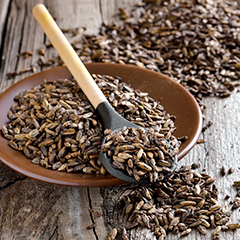
1. Selection of Grains:
-
Choosing the Grain: whiskey starts with the selection of grains, such as barley, corn, rye, or wheat. The type of grain has a significant impact on the final flavor of the whiskey.
-
Malted or Unmalted: some whiskies use malted barley, which involves soaking the barley in water, allowing it to germinate, and then drying it in a kiln. This process activates enzymes in the barley that are essential for converting grain starches into fermentable sugars.
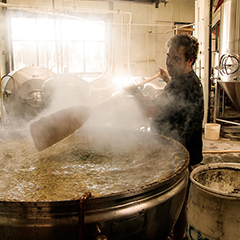
2. Milling and Mashing:
-
Milling: The selected grains are ground into a coarse powder, often referred to as 'grist.' This process ensures that the grain's starches are accessible for conversion into sugar.
-
Mashing: The grist is then mixed with hot water, extracting the fermentable sugars and creating a sweet liquid known as 'wort.'
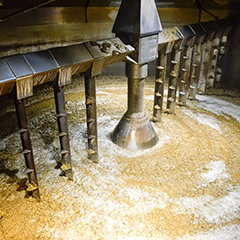
3. Fermentation:
-
Yeast Added: The wort is transferred to a fermentation vessel, often called a washback, where yeast is introduced.
-
Alcohol Production: The yeast consumes the sugars in the wort, producing alcohol, carbon dioxide, and heat. This process transforms the sweet wort into a beer-like liquid known as the 'wash' with an alcohol content around 6-8%.
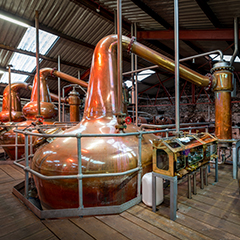
4. Distillation:
-
Increasing Alcohol Content: The wash is distilled in a still to increase its alcohol content and refine its flavors. The still's shape and size affect the whiskey's character and flavor.
-
Cutting the Spirit: Distillers make 'cuts' during distillation, separating the spirit into the head, heart, and tails. The 'heart' is the section of the distillate that becomes whiskey.
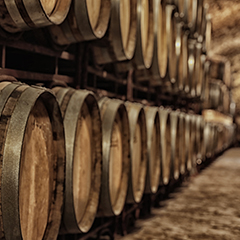
5. Maturation:
-
Aging in Oak: The spirit is transferred into oak casks for aging. Over time, the whiskey draws flavor and color from the wood, mellowing and gaining complexity.
-
Influence of Environment: The environment of the aging warehouse (the temperature, humidity, and air quality) also plays a significant role in shaping the whiskey's final character.
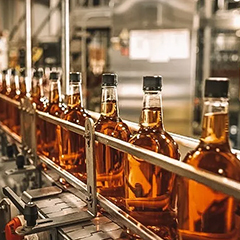
6. Bottling:
-
Final Inspection: After aging for the legally required period, the whiskey is inspected for quality.
-
Dilution and Filtering: Often, the whiskey is diluted to the desired bottle strength, and it may be chill-filtered to remove fatty acids that can cause cloudiness.
-
Ready for Consumers: Finally, the whiskey is ready for bottling and packaging, then shipped worldwide for whiskey lovers to savor.